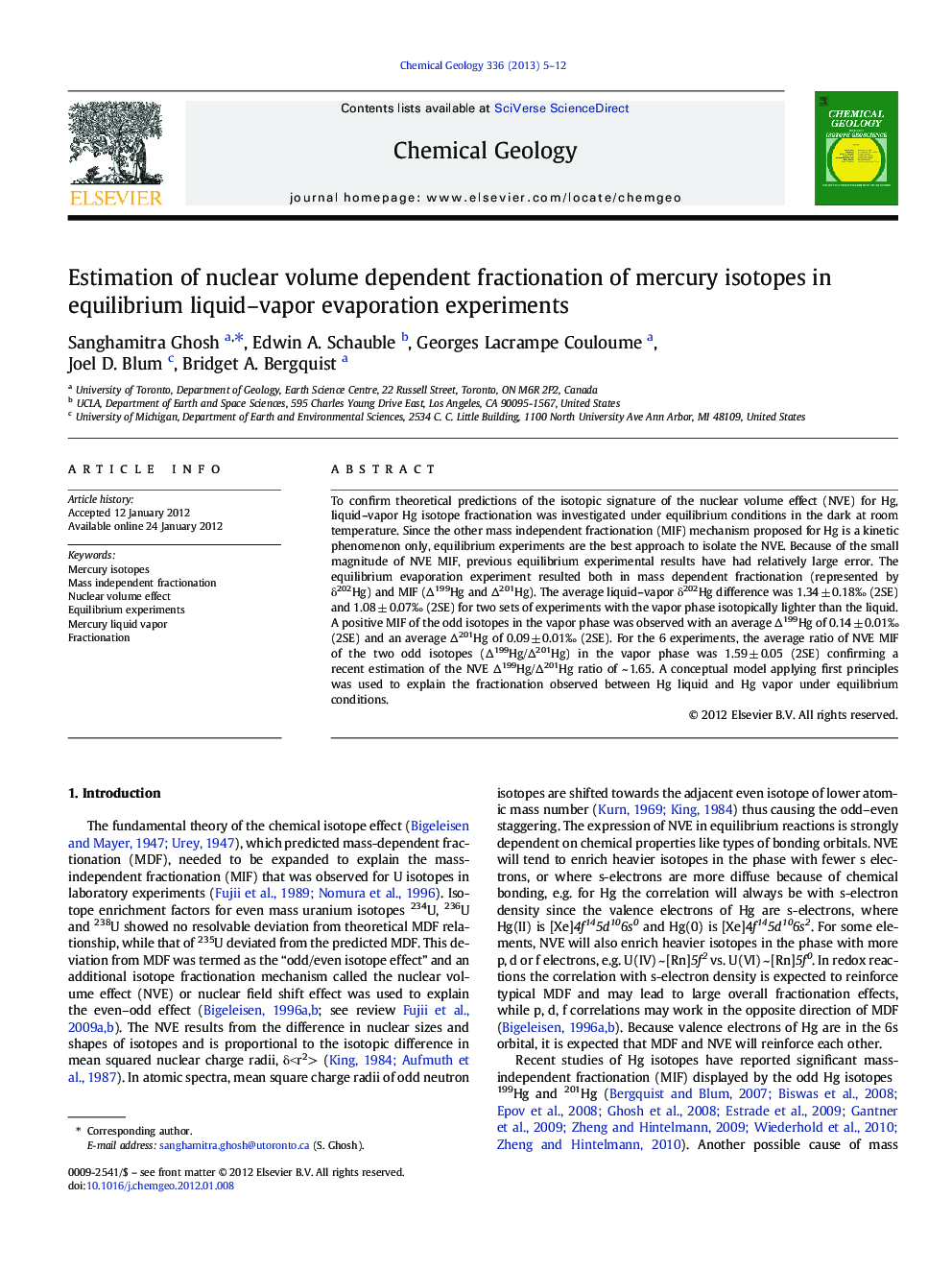| Article ID | Journal | Published Year | Pages | File Type |
|---|---|---|---|---|
| 4699152 | Chemical Geology | 2013 | 8 Pages |
To confirm theoretical predictions of the isotopic signature of the nuclear volume effect (NVE) for Hg, liquid–vapor Hg isotope fractionation was investigated under equilibrium conditions in the dark at room temperature. Since the other mass independent fractionation (MIF) mechanism proposed for Hg is a kinetic phenomenon only, equilibrium experiments are the best approach to isolate the NVE. Because of the small magnitude of NVE MIF, previous equilibrium experimental results have had relatively large error. The equilibrium evaporation experiment resulted both in mass dependent fractionation (represented by δ202Hg) and MIF (Δ199Hg and Δ201Hg). The average liquid–vapor δ202Hg difference was 1.34 ± 0.18‰ (2SE) and 1.08 ± 0.07‰ (2SE) for two sets of experiments with the vapor phase isotopically lighter than the liquid. A positive MIF of the odd isotopes in the vapor phase was observed with an average Δ199Hg of 0.14 ± 0.01‰ (2SE) and an average Δ201Hg of 0.09 ± 0.01‰ (2SE). For the 6 experiments, the average ratio of NVE MIF of the two odd isotopes (Δ199Hg/Δ201Hg) in the vapor phase was 1.59 ± 0.05 (2SE) confirming a recent estimation of the NVE Δ199Hg/Δ201Hg ratio of ~ 1.65. A conceptual model applying first principles was used to explain the fractionation observed between Hg liquid and Hg vapor under equilibrium conditions.
► Confirm Hg theoretical nuclear volume (NV) equilibrium liq–vap Hg fractionation investigated. ► Resulted both in mass dependent fractionation (δ202Hg) and NV (Δ199Hg and Δ201Hg). ► Avg Δ199Hg is 0.14 ± 0.01‰(2SE) and Δ201Hg 0.09 ± 0.01‰(2SE) in vapor phase. ► Avg (Δ199Hg/Δ201Hg)vap 1.59 ± 0.05 confirming recent theoretical NV Δ199Hg/Δ201Hg ~ 1.65. ► Theoretical liq–vap equilibrium evaporation model agrees with experiment.
